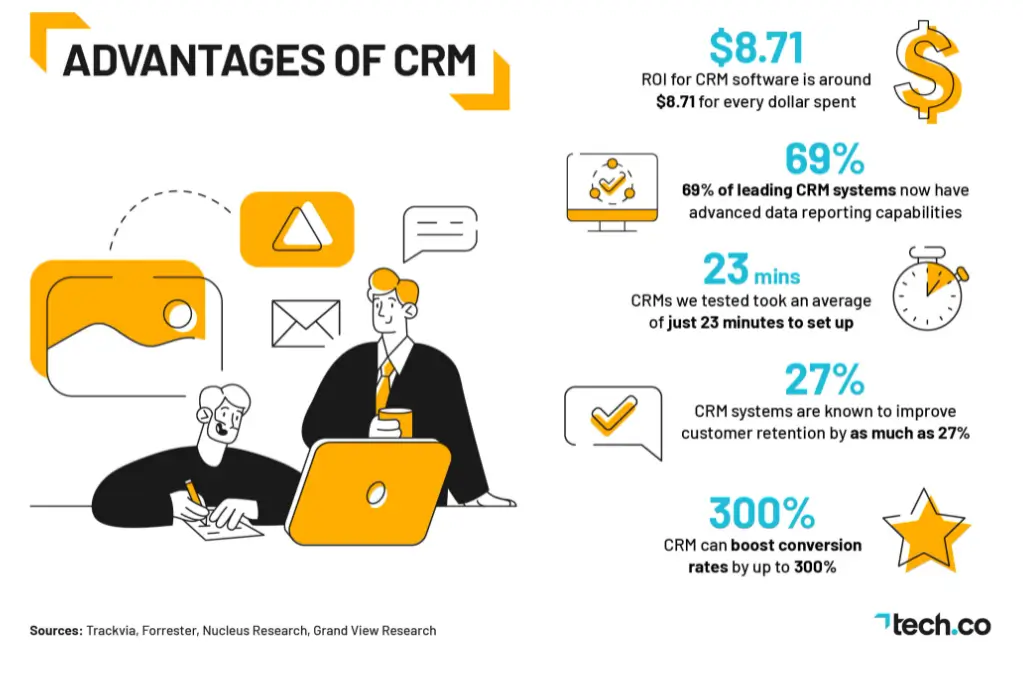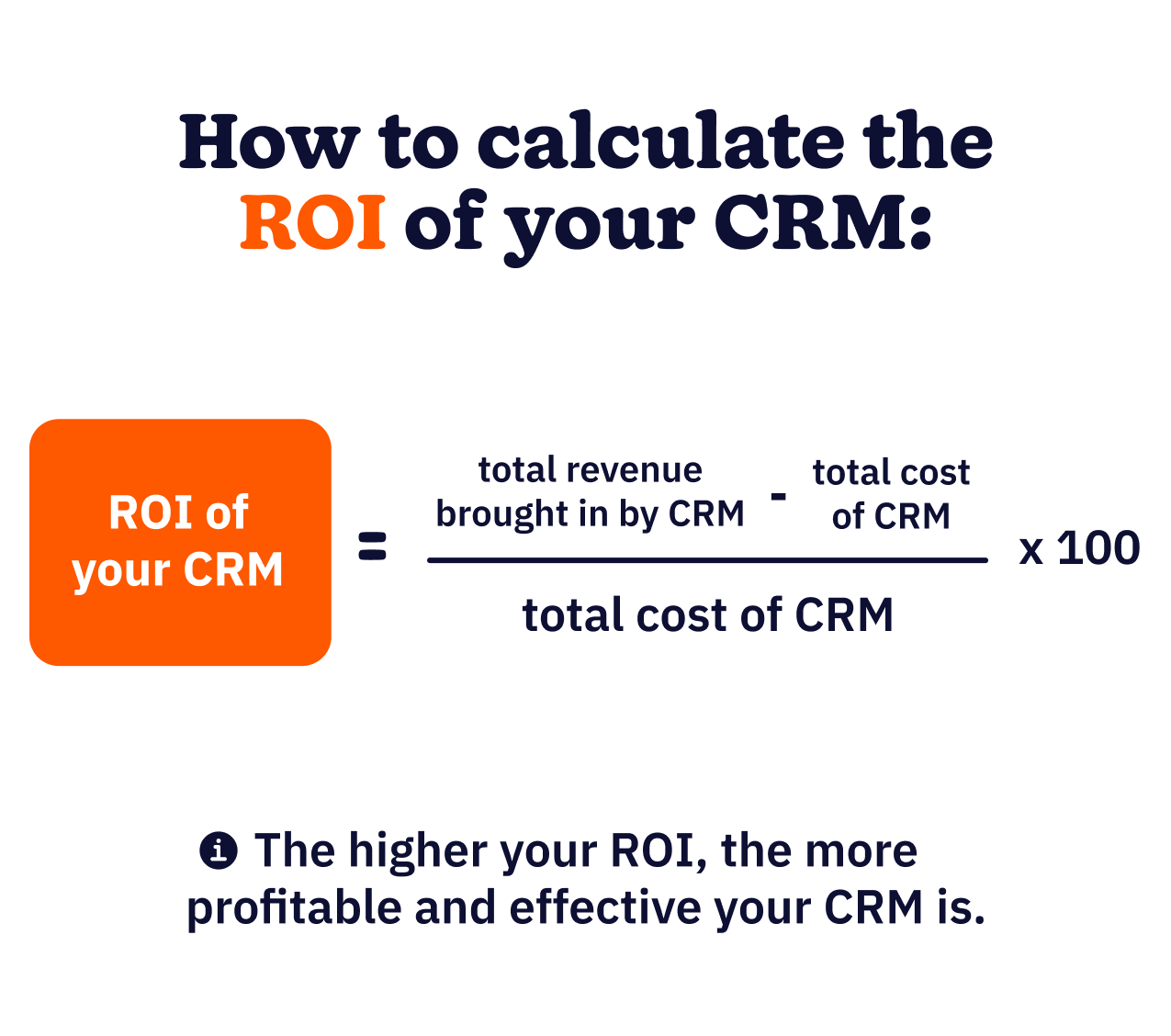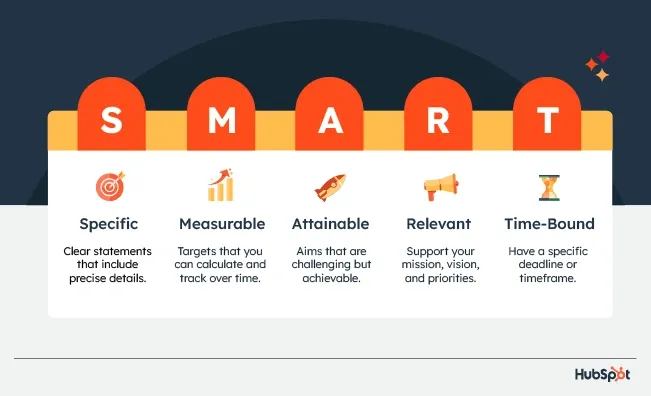As a business owner or manager, you aim to boost profits. A CRM system is a valuable tool for this. It helps you manage customer data, track interactions, and automate sales and marketing tasks. But how can you tell if your CRM system gives you a good ROI?
ROI (Return on Investment) is a financial metric that measures the profitability and effectiveness of an investment. Regarding CRM (Customer Relationship Management) implementation, ROI measures the financial impact and benefits derived from adopting and utilizing a CRM system.
According to a study by Nucleus Research, CRM implementation delivers an average ROI of 336% over three years.
Implementing a CRM system can be a significant investment for businesses, involving software, infrastructure, training, and implementation expenses. Therefore, understanding and tracking the ROI is crucial to justify the investment and ensure that it delivers value.
The purpose of this blog is to provide insights and strategies on how to measure the ROI of your CRM implementation. It aims to guide business owners, managers, and decision-makers in understanding their CRM system's financial impact and benefits.
The blog will explain how to measure CRM ROI with key metrics, factors, and real-life examples.
Understanding CRM ROI

Understanding the key metrics, calculations, factors to consider, and real-life examples related to CRM ROI measurement is essential. For organizations seeking to evaluate their CRM implementations' financial impact and benefits.
By applying these principles, businesses can make informed decisions and optimize their CRM systems to drive growth and success.
Key metrics and calculations for measuring CRM ROI
When measuring the ROI of a CRM implementation, specific key metrics and calculations can provide valuable insights into the financial impact. Some common metrics include:
- Cost of CRM Implementation: This includes the expenses related to software licensing, hardware infrastructure, training, customization, and ongoing support.
- Revenue Growth: Measure the increase in sales revenue attributed to the CRM system. This can be evaluated by comparing sales performance before and after CRM implementation.
- Cost Savings: Assess the efficiency gains and reductions achieved through the CRM system. This may involve streamlining processes, eliminating duplicate data, reducing manual work, and improving productivity.
- Customer Lifetime Value: Calculate the increase in customer value resulting from improved customer satisfaction, retention, and cross-selling opportunities.
- Conversion Rates: Measure the impact of CRM on lead-to-opportunity conversion rates and opportunity-to-sale conversion rates. This helps evaluate the effectiveness of the system in driving sales.
Factors to consider when calculating ROI

To accurately calculate CRM ROI, several factors must be taken into account:
- Timeframe: Determine the appropriate period for calculating ROI, considering the implementation timeline and the expected duration for ROI realization.
- Costs and Benefits: Identify all the costs associated with CRM implementation, including one-time and ongoing expenses (such as maintenance and upgrades). Similarly, consider tangible and intangible benefits, such as increased customer satisfaction or improved data quality.
- Baseline Performance: Establish a baseline for comparison by measuring pre-implementation performance in critical areas like sales, customer satisfaction, and productivity. This baseline will serve as a reference point for evaluating the impact of CRM.
- ROI Formula: Choose the appropriate formula for calculating ROI based on the specific objectives and goals of the CRM implementation. The most common formula for ROI is [(Net Profit/Cost of Investment) x 100], but variations may be necessary to capture the unique aspects of your organization.
Suggested Reading:
Identifying CRM Goals and Objectives

Defining and aligning clear goals with the business strategy and customer needs is essential for effective CRM implementation and accurate ROI measurement.
By setting specific and measurable objectives and ensuring alignment with broader organizational goals, businesses maximize the potential of CRM to deliver tangible financial benefits and drive ROI.
Defining clear goals and objectives for CRM implementation
To accurately measure the ROI of CRM implementation, it is crucial to define clear and specific goals and objectives. These goals should align with the overall business strategy and focus on addressing specific challenges or opportunities.
When setting goals for CRM implementation, they should be SMART: Specific, Measurable, Achievable, Relevant, and Time-bound.
For example, instead of setting a vague goal like "improve customer satisfaction," it is better to set a specific and measurable goal like "increase customer satisfaction scores by 10% within six months."
Clear goals provide a framework for measuring the success of CRM implementation, as they set expectations and help track progress over time.
Aligning goals with business strategy and customer needs
Successful CRM implementation requires aligning CRM goals with the overall business strategy and customer needs. This alignment ensures that CRM initiatives support the larger organizational objectives and ultimately contribute to ROI.
Understanding the customer journey and identifying pain points or areas for improvement is crucial. By aligning CRM goals with customer needs, businesses can focus on enhancing customer experience, improving satisfaction, and increasing loyalty.
Similarly, aligning CRM goals with the overall business strategy helps ensure that CRM implementation aligns with broader organizational objectives. This alignment enhances the strategic value of CRM and increases the likelihood of achieving a positive ROI.
How do goals impact ROI measurement?
The goals set for CRM implementation directly impact the measurement of ROI. Organizations can establish clear goals by defining the specific metrics and calculations relevant to their objectives.
By aligning goals with ROI measurement, organizations understand the financial impact of CRM implementation. It enables them to track progress and assess the success of their CRM initiatives.
Furthermore, goal alignment helps prioritize and allocate resources to the most critical areas in achieving the desired ROI.
It allows organizations to make informed decisions on customization, training, and ongoing support that are directly tied to the goals and objectives of CRM implementation.
Measuring Financial Impact
Measuring the financial impact of CRM implementation involves assessing cost savings, evaluating revenue growth, and calculating the bottom-line impact.
Organizations can gauge the financial success and effectiveness of their CRM initiatives by analyzing the cost savings and efficiencies gained through CRM, assessing the revenue growth and increased customer value, and calculating the ROI.
This information enables informed decision-making to optimize CRM strategies and drive long-term business growth.
Assessing cost savings and efficiencies
One key aspect of measuring the financial impact of CRM implementation is assessing cost savings and efficiencies. CRM systems can streamline processes, automate tasks, and eliminate manual work, significantly reducing costs.
Organizations should evaluate the reduction in operational costs achieved through CRM implementation. This includes identifying savings from reduced labor costs, improved productivity and decreased reliance on manual data entry and maintenance.
Evaluating revenue growth and increased customer value
CRM systems impact finances by increasing revenue and customer value. They help attract leads, improve sales, and enhance customer satisfaction.
CRM tools improve lead management, making prospect engagement more effective. By tracking interactions and preferences, CRM identifies opportunities for more revenue.
CRM also boosts customer satisfaction and retention, increasing customer lifetime value. Personalized experiences and strong relationships lead to more revenue from existing customers.
To measure the financial impact, compare sales metrics before and after CRM implementation, including total revenue, deal size, conversions, and customer retention.
Suggested Reading:
Tracking Non-Financial Benefits
Tracking the non-financial benefits of CRM implementation is crucial in evaluating CRM initiatives' overall impact and success.
By measuring improvements in customer satisfaction and loyalty, enhancing sales and marketing effectiveness, and streamlining processes and collaboration, organizations can gain insights into the non-financial value generated by CRM.
This information provides a holistic view of CRM's impact on the organization and helps optimize CRM strategies to drive long-term growth and success.
Improved customer satisfaction and loyalty
CRM implementation goes beyond finances, benefiting customer satisfaction and loyalty. It centralizes data for personalized experiences, quicker issue resolution, and stronger relationships.
CRM tracking deepens understanding, anticipating needs, and making relevant recommendations, increasing satisfaction and loyalty.
Measuring this is done through surveys, feedback, and retention rates. Compare these before and after CRM to assess its impact, gaining insights into its effectiveness.
Enhanced sales and marketing effectiveness
CRM improves sales and marketing effectiveness by providing better customer data. It helps prioritize leads, resulting in higher conversion rates. CRM also aids in personalized marketing for more customer engagement and sales.
Measure effectiveness with metrics like lead conversion rates, sales pipeline velocity, customer acquisition costs, and marketing ROI. Compare these before and after CRM to assess its impact and find areas for improvement.
Streamlined processes and improved collaboration
CRM implementation streamlines processes and boosts organizational collaboration by centralizing data and eliminating silos.
CRM automates tasks, reduces duplication, and enables real-time information sharing, enhancing efficiency and reducing errors. For instance, teams can work together on tasks, share customer data, and track real-time progress, improving productivity and responsiveness.
Measure the impact on process efficiency and collaboration with metrics like task completion times, reduced data entry errors, and faster response times. Tracking these metrics helps identify areas where CRM has improved processes and assess its overall impact on operational efficiency.
Conclusion
Measuring CRM ROI is crucial for optimizing your CRM system's value. It helps make informed decisions, pinpoint areas for enhancement, and achieve better outcomes.
This article has covered what CRM ROI is, its benefits, and the challenges associated with its measurement. It has also offered suggestions for enhancing CRM ROI, like setting clear goals, providing thorough training, and continually refining your CRM system.
While measuring CRM ROI can be intricate, it's an investment that pays off. By consistently assessing and enhancing your CRM ROI, you can boost business results, strengthen customer relationships, and stay competitive.
Remember that measuring CRM ROI is an ongoing process. Regularly review your goals, assess progress, and make necessary adjustments to ensure long-term value from your CRM investment.
Whether you're exploring CRM systems or seeking to optimize your current one, these tips will guide you in maximizing your CRM investment's ROI.
Suggested Reading:
Frequently Asked Questions (FAQs)
How do you measure the ROI of CRM implementation?
To measure the ROI of CRM implementation, businesses can track financial metrics such as revenue growth and cost reduction, as well as non-financial metrics such as customer satisfaction and process efficiency.
What are the benefits of measuring the ROI of CRM?
Measuring the ROI of CRM helps businesses understand the impact of their investment, identify areas for improvement, and communicate the value of CRM to stakeholders.
What tools can be used to measure CRM ROI?
Common tools for measuring CRM ROI include performance dashboards, customer feedback surveys, and data analytics software. These tools can provide insights into financial and non-financial metrics to measure the effectiveness of CRM implementation.
How frequently should businesses measure CRM ROI?
Businesses should measure CRM ROI at regular intervals, such as quarterly or annually, to track progress and identify areas for improvement. Measuring ROI ongoing basis is necessary to stay adaptable and make informed decisions.
How can businesses improve CRM ROI?
Improving CRM ROI requires a holistic approach, including training and user adoption, continuous improvement, and data-driven decision-making. Prioritizing practical training and user adoption can lead to better CRM adoption and optimized processes.
How can small businesses optimize their CRM for ROI?
Small businesses can optimize CRM for ROI by prioritizing practical training and adoption, regularly evaluating and fine-tuning processes, leveraging automation and integrated systems, and utilizing data-driven insights to inform decision-making.



